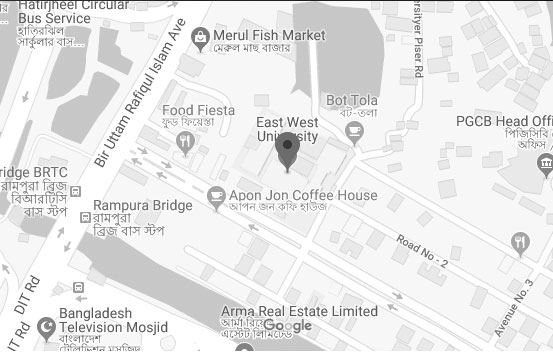- Plasma Physics
- Wireless Communications and Networks.
- Plasma Physics
- Cloud Electrification
- Dusty Plasma Physics
- Applied Mathematics
|
Robust methods of estimation, Outlier detection, Regression diagnostics, Data mining and statistical machine learning, Multivariate analysis, Statistical computing and graphics, Econometrics methods, Simulation and bootstrapping techniques.
Porous Materials for Environmental Remediation
-Synthesis of porous materials such as Metal-organic fameworks (MOFs), Zeolites, Nickle phosphate molecular sieves.
-Rapid synthesis of porous materials with microwave and ultrasound irradiation.
-Functionalization/modification of MOFs for targeted applications.
Adsorption/separation/Purification
–Adsorptive removal of hazardous materials, including Sulfur Containing Compound (SCC), Nitrogen Containing Compounds (NCC), Pharmaceuticals and Personal Care Products (PPCPs), Contaminants of Emrrging Concerns (CECs).
-Gas phase adsorption of arometics.
Heterogeneous Catalysis
-Acid catalysis with nano porous materials.
-Conversion of biomass into chemical intermediates via dehydration
-Reduction and photocatlysis of organic pollutants
1. Highly porous materials
- Synthesis/Application of porous materials (MOFs, zeolites, carbons, AlPOs)
- MOF- or organic polymer-derived carbons (highly porous, ordered and having various functionalities) adsorption/storage, catalysis and electrical energy storage.
-Rapid/continuous synthesis of porous materials with microwave and ultrasonics
- Functionalization/Modification of MOFs for selective adsorption of hazardous compounds
2. Adsorption/separation
- CO2 capture with porous adsorbents
- Fuel purification (removal of S- and N- containing compounds)
- Water purification (removal of pharmaceuticals, personal care products, pesticides, dyes)
- Adsorption/separation of hydrocarbons
- Adsorption/storage of gases
3. Heterogeneous catalysis
- Acid catalysis with porous materials (dehydration, isomerization, alkylation)
- Conversion of biomass into chemical intermediates with dehydration
4. Electrochemistry
-Supercapacitor
-Sensor
- Structural petroleomics, i.e., Petroleum oil analysis
- Investigation of structure of individual compounds in complex natural mixtures by High Resolution Mass Spectrometry (HRMS)
- Environmental Pollution by Heavy metals
- Analysis of Heavy metals by Atomic Absorption Spectroscopy, Inductively Coupled Plasma Mass Spectrometry (ICP-MS)
- Structural Analysis of Chemicals, i.e., Polycyclic Aromatic Hydrocarbons (PAHs) Compounds
- Separation of PAHs by Liquid Chromatography coupled to Mass Spectrometry (LC-MS)
- Analysis of Environmental Samples, e.g., Coal, Petroleum, Fuel, Bio-oil, soil, water etc by Instrumental Techniques
I have been conducting Numerical Research in an Interdisciplinary Research Field (i.e., Combustion Dynamics or Reacting Fluid Dynamics where Chemical reaction systems play vital role), which not only covers the research activities of the Departments of Mechanical-, Aerospace- and Automotive-Engineering but also covers the research activities of the Department of Applied Mathematics. More specifically, I am interested in the following research topics:
- Computational Fluid Dynamics (CFD)/ Fluid Science and Engineering.
- Computational Premixed Flame Dynamics (CPFD) / Combustion Science and Engineering.
- Diffusion flame driven Chemiluminescence Physics.
- Stability mechanisms of the Micro-Scale Flame Physics.
- Multiphase (i.e., tri-phase: solid-liquid-gas) Combustion Dynamics.
- Chemical reactions' path analysis for Hydrocarbon fuels, Hydrogen fuel and Syngas fuels during Combustion process.
- Applied Mathematics and its applications in Fluid Dynamics, Combustion Dynamics and Fire Dynamics.
- Fluid flow and heat, mass, species transport in the Laminar Boundary Layer.
- Solidification, Melting and dripping of molten Dynamics.
- Free-surface tracking and its dynamics in Multiphase flow systems.
- Droplet/Spray Combustion Physics.
- Asymptotic analysis of Combustion Dynamics.
- Bioheat Transfer / Heat and Mass Transfer / Heat Transfer Engineering/Thermal Engineering.
- Fire Dynamics / Fire Protection Engineering/ Flame spread over Electrical cables/ Flame spread over polymeric materials.
- Flame Acceleration process/Flame transition process/ Flame Instability Process.
- Direct Numerical Simulation (DNS), Large Eddy simulation (LES) and Detached eddy simulation (DES) of CFD and CPFD.
- Flame-vortex interaction Dynamics / Flame Wrinkling Dynamics.
- Oxygened fuels supported micro-flame dynamics inside the micro-burner.
- Microgravity Combustion Physics/Earth gravity Combustion Physics /Zero gravity Combustion Physics.
- Flame Dynamics under non-uniform thermal field / Flame Dynamics under radiative field.
- Dynamical System
- Differential Geometry
- Astrophysics:
Gravitational lensing, large-scale structure of the universe, General Theory of Relativity, cosmic structures, ray tracing methodology, N-body simulations, dark matter, dark energy, and implementing machine learning approaches to deal with big datasets. - Plasma Physics:
Electrostatic waves and their nonlinear structures in various plasma systems, space and astrophysical plasmas, multi-ion plasmas, degenerate quantum plasmas, nonextensive plasmas, strongly coupled plasmas, and dusty/complex plasmas.
- Theoretical and Computational Mathematics
Biostatistics, Public Health, Statistical Modeling, Generalized Linear Model, Forecasting, Time-Series Modeling, Big Data Analysis, Ecological & Environmental Statistics
- Statistical Modeling
- Mixed Model
- Public Health
- Time Series Data Analysis
- Public health
- Data Science
- Education
- Biostatistics


